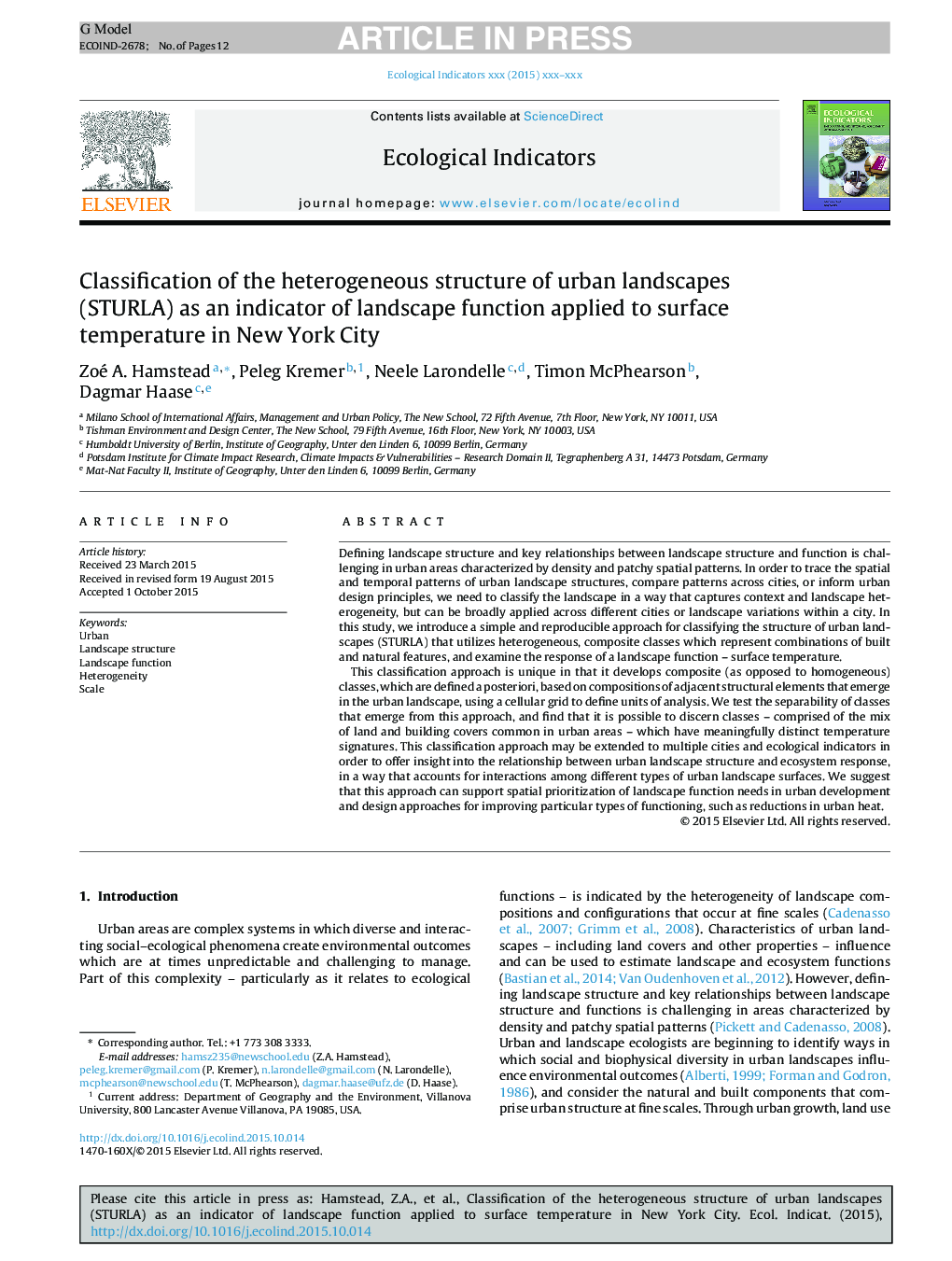| Article ID | Journal | Published Year | Pages | File Type |
|---|---|---|---|---|
| 6293030 | Ecological Indicators | 2016 | 12 Pages |
Abstract
This classification approach is unique in that it develops composite (as opposed to homogeneous) classes, which are defined a posteriori, based on compositions of adjacent structural elements that emerge in the urban landscape, using a cellular grid to define units of analysis. We test the separability of classes that emerge from this approach, and find that it is possible to discern classes - comprised of the mix of land and building covers common in urban areas - which have meaningfully distinct temperature signatures. This classification approach may be extended to multiple cities and ecological indicators in order to offer insight into the relationship between urban landscape structure and ecosystem response, in a way that accounts for interactions among different types of urban landscape surfaces. We suggest that this approach can support spatial prioritization of landscape function needs in urban development and design approaches for improving particular types of functioning, such as reductions in urban heat.
Related Topics
Life Sciences
Agricultural and Biological Sciences
Ecology, Evolution, Behavior and Systematics
Authors
Zoé A. Hamstead, Peleg Kremer, Neele Larondelle, Timon McPhearson, Dagmar Haase,
